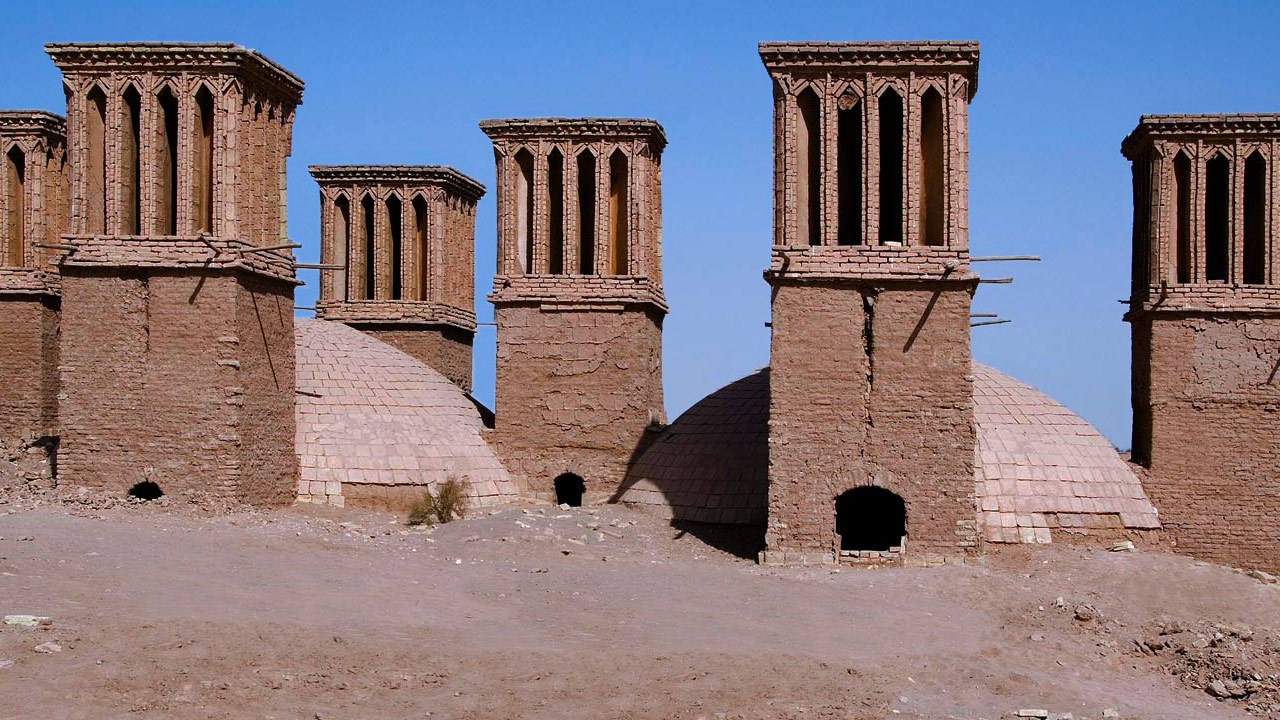Open for students and professionals of Architecture and Building Science, as well as for the faculties of Structural Engineering and (Geotechnical) Earthquake Engineering. Both disciplines need to work together in order to make useful and realistic designs that can withstand earthquakes. Send us an email to request the full assignment sheet via this link.
Passive cooling is a building design approach that focuses on heat gain control and heat dissipation, in order to improve the indoor thermal comfort of a building. Two approaches are used: either by preventing heat from entering the interior (heat gain prevention) or by removing heat from the building (heat dissipation and natural cooling). The aim is to achieve this with minimum to zero energy consumption.
Techniques that are used to prevent the heat gain entering the building, include site configuration, building form and layout, shading devices and double roofs.
One way of heat dissipation is to include the use of thermal mass as a heat sink. The thermal mass will absorb and store heat during daytime hours and return it to space at a later time, sometimes combined with night ventilation.
Another such technique is natural cooling, which utilizes on-site heat sinks such as the upper atmosphere (night sky), outdoor breezes, and the (lower) earth temperature. Natural cooling can be separated into four different categories: cooling and ventilation, radiative cooling, evaporative cooling, and earth coupling.
We are interested in finding with low-tech and low-cost solutions that adapt to certain local contextual factors.
In some cases, we can make use of the local breeze and we must focus on orientation and catching the wind. At other places, we can make use of the landscape, or add vegetation and water bodies to guide the process. Perhaps we must include tunnels, shafts, mass walls and openings at strategic places. Or we add measures to block the sun such as a double roof, which may be effective but also more expensive at the same time.
Added to all this, we must be certain that the structural safety of the structure as a whole is ensured. It must be possible to build the provisions in earthquake or hurricane-prone areas.
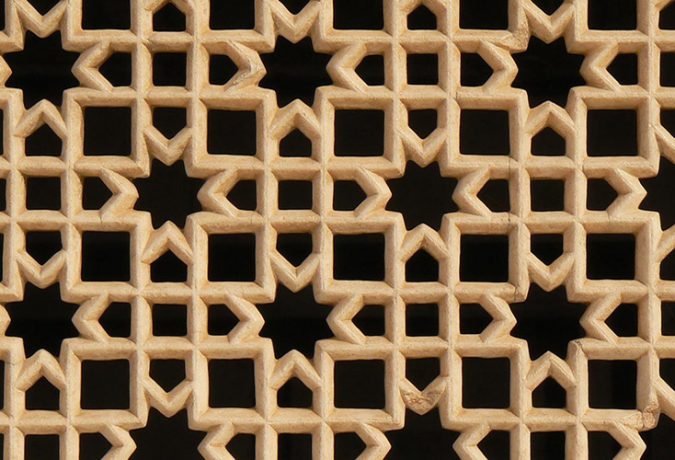 Ventilating screens or ‘jalis’ at the Baby Taj in Agra, India.
Ventilating screens or ‘jalis’ at the Baby Taj in Agra, India.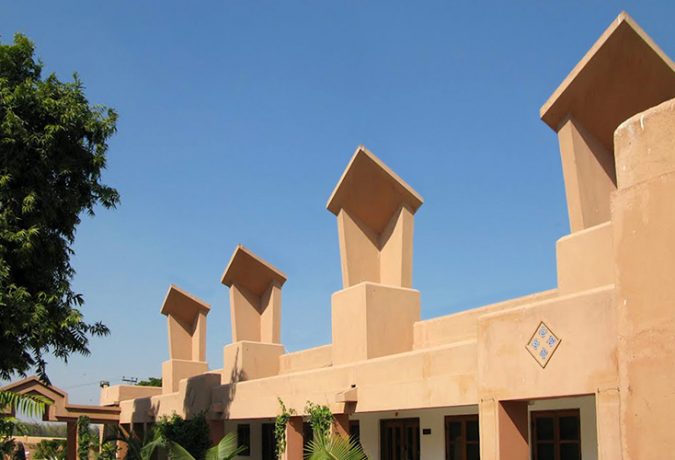 Wind catchers at the Aga Khan Maternity Home in Hyderabad, Pakistan.
Wind catchers at the Aga Khan Maternity Home in Hyderabad, Pakistan.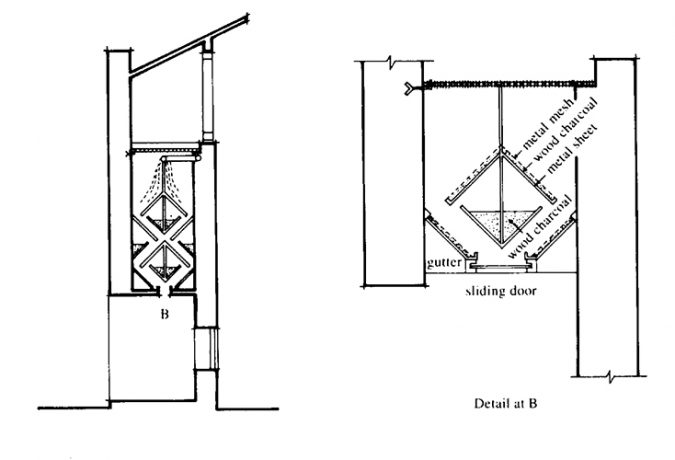 Principle of a wind tower, also known as badgir or malqaf, as designed by Hasan Fathy.
Principle of a wind tower, also known as badgir or malqaf, as designed by Hasan Fathy.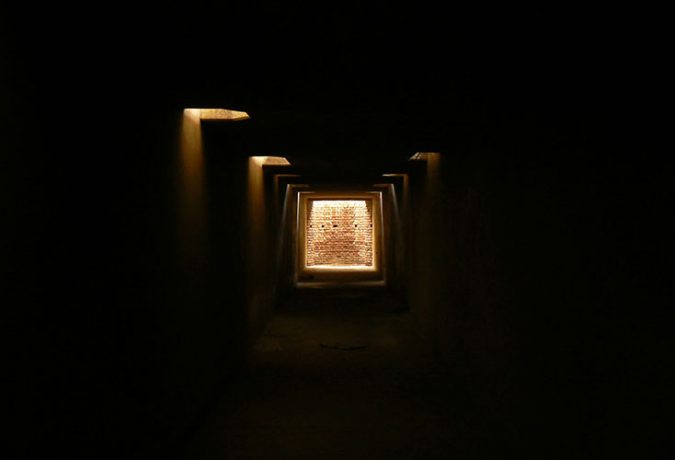 Tunnel below ground level to make use of earth cooling, at the AV Learning Center.
Tunnel below ground level to make use of earth cooling, at the AV Learning Center.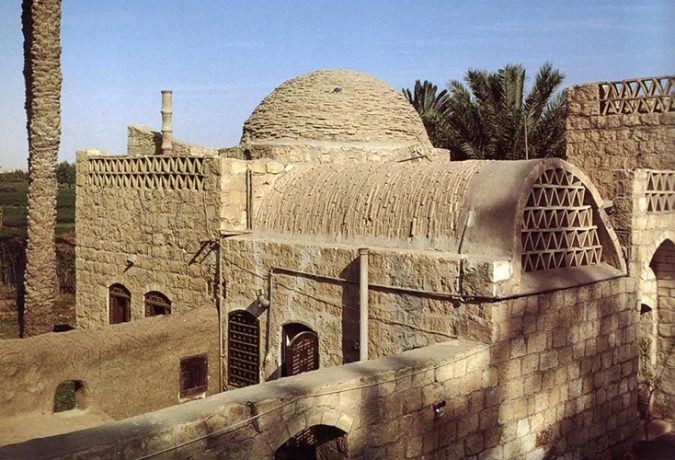 Ventilation under the arched roof creates a cooling effect, in this house by Hasan Fathy.
Ventilation under the arched roof creates a cooling effect, in this house by Hasan Fathy.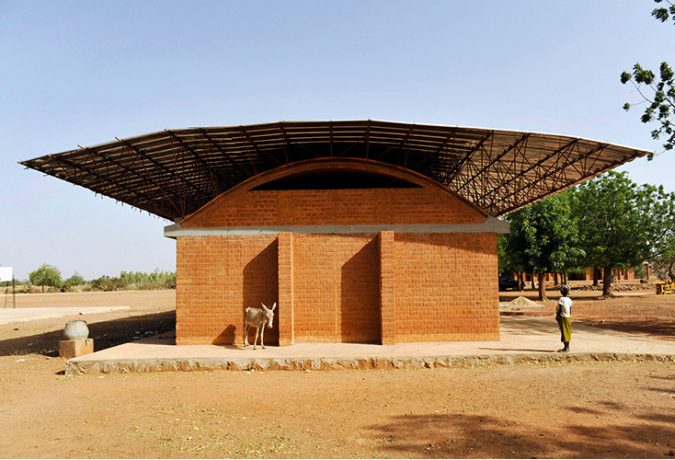 Double roof at a school in Burkina Faso, by Diébédo Francis Kéré.
Double roof at a school in Burkina Faso, by Diébédo Francis Kéré.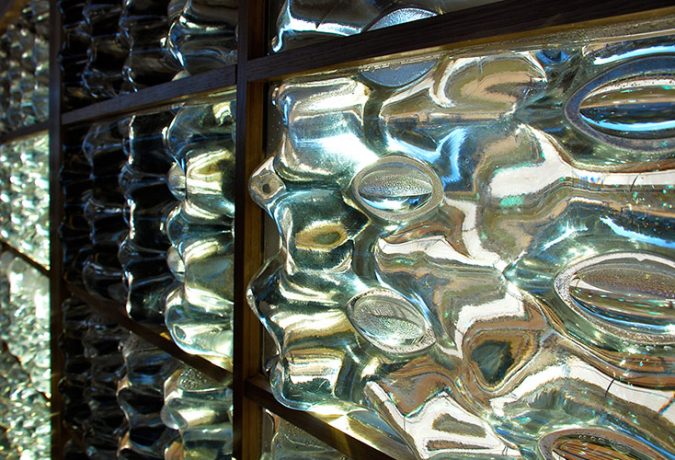 Using thermal mass to store heat, such as this water wall at the University of Arizona.
Using thermal mass to store heat, such as this water wall at the University of Arizona.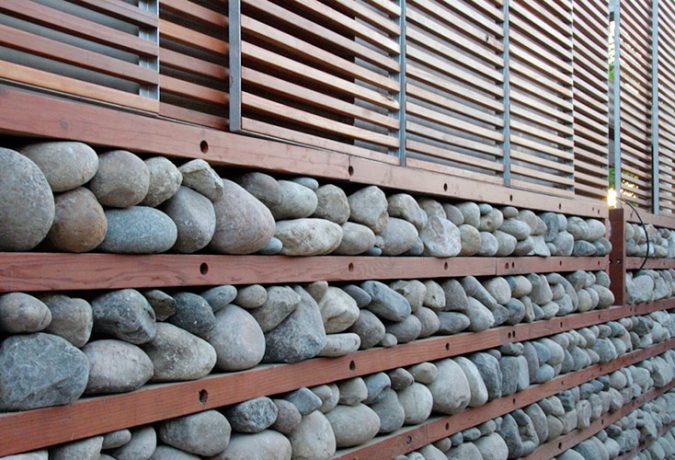 Using thermal mass to store heat and regulate heat transfer, as with this stone plinth in California by Jeremy Levine Design.
Using thermal mass to store heat and regulate heat transfer, as with this stone plinth in California by Jeremy Levine Design.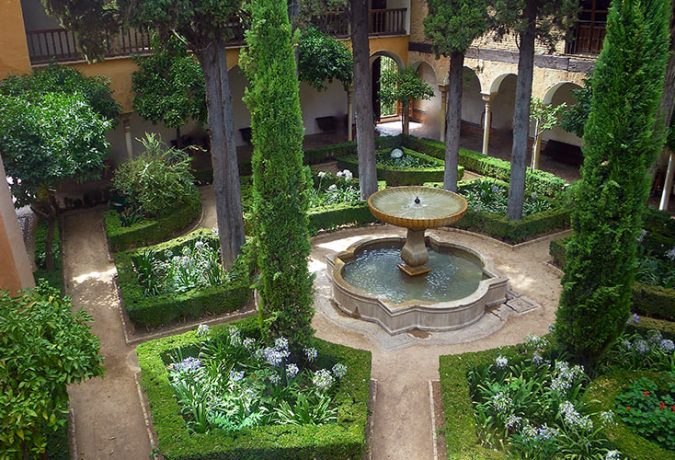 Using vegetation and fountains to create a cooling effect within the courtyard, at the famous Alhambra in Spain.
Using vegetation and fountains to create a cooling effect within the courtyard, at the famous Alhambra in Spain.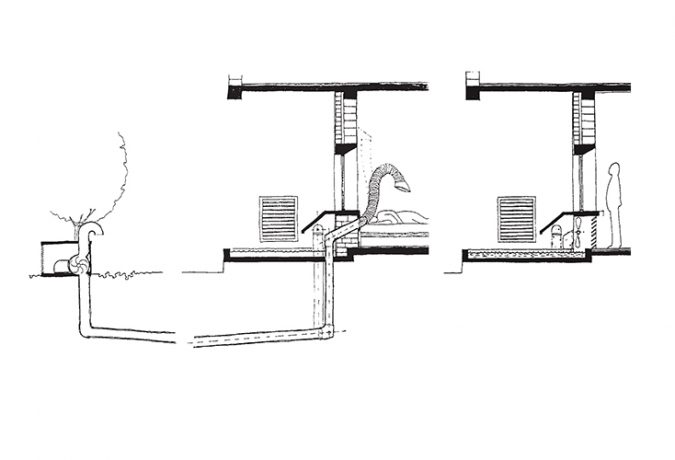 Utilizing the ground temperature above vegetation and water bodies, by Kapoor and Akhtar (source: Ecohouse 3 by Sue Roaf et al).
Utilizing the ground temperature above vegetation and water bodies, by Kapoor and Akhtar (source: Ecohouse 3 by Sue Roaf et al).